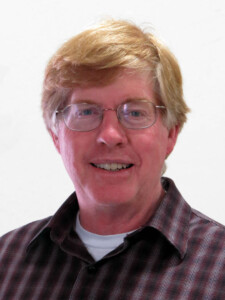Take a Hike … with Mike Monroe: Chitactac-Adams park lives on; volunteer opportunities abound
The renewed commitment to the park included educational component for school field trips
![]()

By Mike Monroe

Mike Monroe
In 1956, after nearly 100 years of serving the neighboring rural farm and ranching families, the Adams School on Watsonville Road was destroyed by fire. It was the second school that had succumbed to fire. The first one-room schoolhouse burned circa 1915. This time, the decision was made not to rebuild. The families living along Burchell, Redwood Retreat and Day roads would have to get creative in order to transport children to school “in town.”
The population of Gilroy in 1956 was 6,500. Morgan Hill had about 2,500 residents. The landscape was full of orchards and vineyards with just a hint of suburban development. An appreciation for cultural history, especially in a local setting, was still in a nascent state. It would not be until the 1970s when academic and historical voices would begin to express concern for Chitactac-Adams as a cultural resource.
John Hicks Adams (1820-1878), an early pioneer and future sheriff, chose to settle near the confluence of Little Arthur and Uvas creeks in 1853. He had enjoyed some success in the goldfields of the Sierra Nevada after arriving in California in 1849. In 1856, the Adams family donated about 4.5 acres of land for a school site. The site would occupy a small portion of what had been the former expansive village and cemetery of the Chitactac people. The intersection of today’s roadways mimic the original foot trails established more than 3,000 years ago by the Amah Mutsun.
The Mutsun Ohlone had been “recruited,” oftentimes forcibly coerced, into Mission Santa Cruz and Mission San Juan Bautista beginning in 1791. By the early 1800s, Chitactac was mostly empty with only a few runaway survivors or elderly individuals remaining. They suffered from the historical trauma of the destruction of their culture and the rampant effects of devastating European diseases.
When the Adams School site was abandoned in 1956 by the Gilroy School District because of its remote location, the property was unattended until the land was deeded to Santa Clara County in 1963. Again, any consideration about the historical importance of the Chitactac village or the Adams School was deemed as inconsequential at the time. In 1966, 10 years after the fire, Santa Clara County opted to grade a parking lot along Watsonville Road and called the area the “Adams Picnic Site.” The degradation of Chitactac continued into the early 1990s until pleas from historians and archeologists convinced government leaders to preserve and honor the site as one of the most significant cultural heritage locations in the Bay Area.
 After cleaning the graffiti on creekside boulders and installing new infrastructure, Santa Clara County Parks made an ongoing commitment to the community by designating Chitactac-Adams as a Heritage County Park. The official dedication occurred Sept. 12, 1998.
After cleaning the graffiti on creekside boulders and installing new infrastructure, Santa Clara County Parks made an ongoing commitment to the community by designating Chitactac-Adams as a Heritage County Park. The official dedication occurred Sept. 12, 1998.
The renewed commitment included instituting a robust educational component for school field trips. Professional consultants and tribal members worked together to develop a curriculum in support of the academic protocols set out by the state for the study of California history. Volunteers, supervised by park staff, have played a vital role in teaching students about Chitactac. With pandemic restrictions lifted, between 45 to 50 field trips are expected this school year with nearly 2,000 participants. A virtual learning module has also been implemented for those classroom settings that prefer not to employ a school bus.
A neighbor of the new park, Robyn Houts signed up to become a Chitactac volunteer from Day 1. Quickly she realized the significance of the nearly 500 hundred bedrock mortars in the area and the petroglyphs that had been etched into the sandstone boulders along the Uvas Creek channel. Houts fully assimilated herself into learning about the Native American peoples of the Central Coast. She decided to pursue new undergraduate and graduate studies in archeology.
 Her academic and teaching skills have imparted a wealth of cultural experience and knowledge to student visitors for the past 25 years.
Her academic and teaching skills have imparted a wealth of cultural experience and knowledge to student visitors for the past 25 years.
Volunteer recruitment and training is an annual effort for Santa Clara County Parks. Each spring, a new cadre of volunteers step forward with a shared desire to give back. That’s how 19 years ago Dan Cloutier responded to the invitation of becoming a volunteer. His academic and professional experience melded with his enthusiasm to learn more about Chitactac. When students and chaperones arrive, Cloutier welcomes them with a good morning greeting “mis Y min aruh’a” in the Mutsun language and his clapper stick — a musical instrument made from native elderberry bushes which thrive in riparian settings.
A visit to the park is always time well spent. It may be small, but its cultural message of place and presence is immense.
Mike Monroe is an amateur historian and naturalist who enjoys all the wonders of the southern Santa Clara Valley. Mike and his family have resided in Gilroy since 1986.
- Hike with Mike: Olive growers commit to regenerative organic farming for their oils - April 17, 2024
- Take a Hike … with Mike Monroe: 53rd anniversary of Earth Day to be celebrated at Christmas Hill Park - April 3, 2023
- Take a Hike … with Mike Monroe: Chitactac-Adams park lives on; volunteer opportunities abound - January 24, 2023
